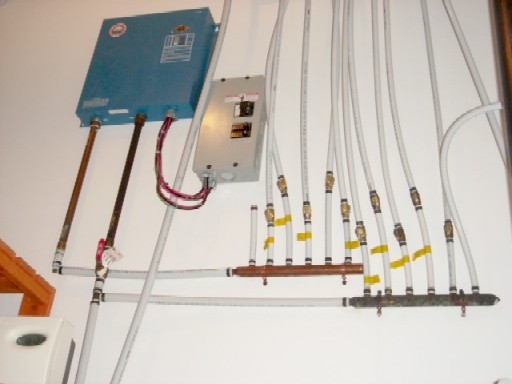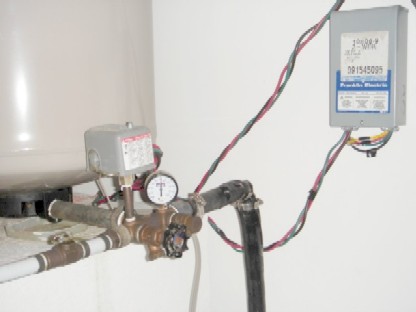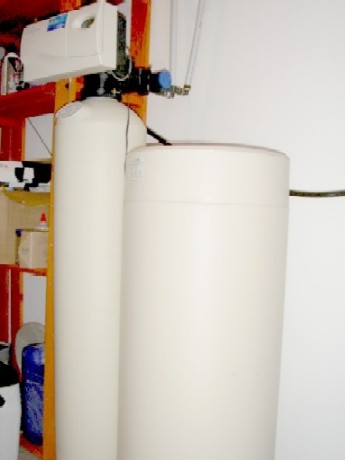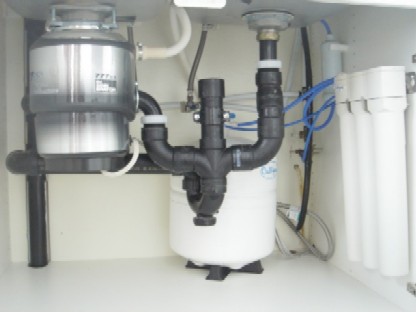
Plumbing

Simplified Plumbing Code
Unfortunately, there had been no book called "The Simplified Plumbing Code". I had to read a few other books and tried to accumulate the important plumbing principles. I had almost succeeded. An inspector found a couple of problems which I was able to correct easily.
Supply lines
For cold and hot water supply I used PEX tubing. Working with PEX was nice and easy.
The PEX tubing has factually replaced copper pipes for a residential construction.
PEX is easy to route inside interior walls or a cealing because the tubing is flexible. Just drill holes for it in studs and joists. It is easy to connect to most appliances either directly or with an adapter. Expensive PEX crimping tool is required though. It crimps copper o-ring over barbed connector inserted into PEX. Properly installed, PEX tubing lasts forever with no maintenance.
I installed two 6-line distribution manifolds in the utility room. One for hot, another for cold water.

Discharge and vent lines
For discharge and vent pipes I used various diameter ABS. ABS was also friendly. The main principles of working with it were making square cuts, for which I acquired an inexpesive tool that allowed me to cut at 90° angle, then smoothing cut edges with sand paper, applying ABS cement to both surfaces and joining them. The last two steps should have been done quickly.
I had two 3" stacks. It had been impossible to enclose them in 2x4" interior walls. Therefore, I made those walls thicker by just framing another wall next to the existing one.
Even though I had built in clean-outs into all discharge lines so that any pipe clogging could be dealt with, so far I never had to use them.

Discharge water goes into the sewage chamber of the septic tank, where liquid is separated from solids. Liquid then drains into the effluent chamber where it is automatically pumped out into the septic field. Sewage chamber is required to be pumped out once in two years.

Well water treatment
From the well, water enters a pressure tank. The tank is pre-charged to 38 psi that provides drawdown of 9.3 gallons of water at 40 to 60 psi. This means that when water pressure drops below 40 psi, the well water pump automatically turns on and when pressure reaches 60 psi, the pump turns off. Another words, the pump is activated every 9.3 gallons of water used to restore the necessary pressure in the system.
From the pressure tank, domestic water goes into the Culligan Gold Series water softener that removes most minerals from water. The 10" resin cylinder periodically regenerates itself by automatically flushing the cylinder with NaCl solution at night. The softener comes with Soft Minder meter option that monitors daily water use and activates regeneration only when needed, saving salt and water.
Garden and garage water bypasses the water softener.
The water softener requires little maintenance. Primarily it needs a bag of NaCl salt every two months or so.
More information on Culligan water softeners can be obtained from the Culligan website Gold series water softener .

Drinking water undergoes further treatment with reverse osmosis filtration under the kitchen sink. As filters become less efficient, they need to be replaced. Usually once a year or once in two years depending on water usage and water hardness.
This is the link to detailed description of the Culligan Good Water Machine Drinking Water System .
On the picture to the left, you can also see a garburator under the kitchen sink.
